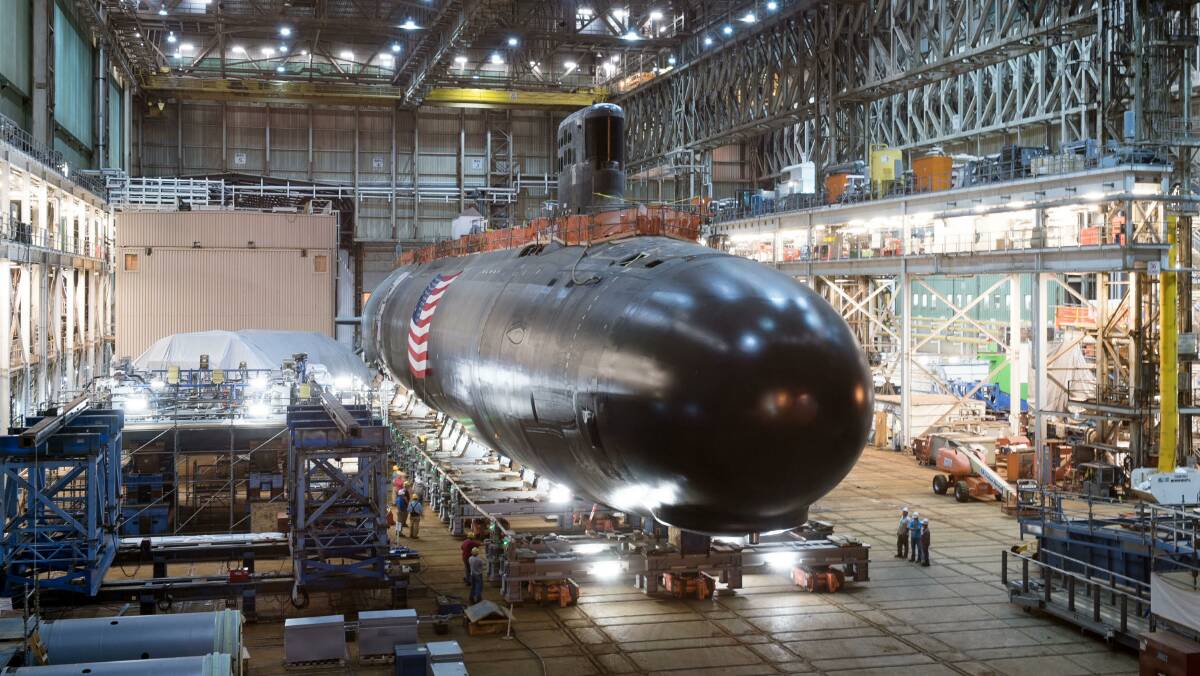
Defence Minister Richard Marles is persisting with a policy that gravely threatens national security: building our nuclear submarines in Australia.
Not one argument for doing this is valid. It would waste tens of billions of dollars and, most worryingly, add at least a decade of delay to badly needed reinforcement of our defences - a decade in which we could be in terrible danger.
The prospect is even worse than it sounds when Marles says our first nuclear submarine won't be operational before the 2040s. In fact, the slow and costly program would almost certainly go wrong, turning into yet another Australian defence foul-up beyond all recognition.
I'd bet London to a brick on it.
It's sometimes said that nuclear submarines are the most complex things that people have ever made. We can only shake with trepidation at the idea of inexperienced Australians in Adelaide trying to build them.
Yet our US ally builds them really well. Obviously we should promptly ask it to economically and quickly construct subs of its excellent Virginia class for us.
Nothing in our history of warship building suggests that nuclear submarine construction in Adelaide would go well. Program-wrecking mistakes were made in building the current subs of the Collins class, even as our people also overcame great challenges.
Our three new destroyers of the Hobart class were three to four years late and more than $1 billion over budget. And the current program to build nine Hunter class frigates is already a shocking mess even before the (grossly delayed) commencement of construction.
Nuclear submarines built in Adelaide? Great! What could possibly go wrong?
Marles is setting us up for disaster. He may want to consider that it will be a disaster with his name all over it.
The situation is terrifying. China's hostility and military power has rocketed over the past decade and we must assume that that country will only get nastier and stronger.
Meanwhile, political instability in Washington forces us to consider just how much direct help we could expect from the increasingly stressed US armed forces in a war.
The 2020s are dangerous enough. We absolutely must make every effort to increase our strength for the 2030s.
A hogwash argument in favour of domestic naval construction is hardly ever challenged, even by defence analysts. It tells us that we can't effectively operate ships we haven't built - even though Australia and many other countries have done so in the past.
You just have to install maintenance equipment, buy spare parts, train technicians and read the manual. For nuclear submarines, wherever built, we'd also need considerable foreign help.
It's true that modifying imported weapons is hard. But, trust me, the last thing we will ever want to do is fool around with the design of a nuclear submarine.
Yet Marles insists that building in Adelaide is inevitable.
Indeed, he tells us that Adelaide is a solution to a problem. The submarine industries of our AUKUS partners, the UK and US, are already running flat chat, so more capacity is needed.
"We've got to make our contribution, through AUKUS, to the totality of the industrial base between the three countries," Marles says.
Yes, but we don't have to do it in Australia.
Gearing up the US industry and building there would be cheaper, faster and more reliable. This approach seems to have been raised first in this column last year then set out in more detail in an article for the Australian Strategic Policy Institute.
Ten months later, it still looks right, and it turns out that former defence minister Peter Dutton was edging towards it before he left office in May.
We must immediately begin paying for expansion of US facilities to build Virginias for us, even before Washington agrees to let us have them.
We start by ordering parts, mostly for the reactor, that are needed before the main building effort begins two to three years later. As this is done, we pay to build up US capacity for those later construction stages.
READ MORE AGE OF THE DRAGON:
There's a US government quote for the cost of facilities to build one additional Virginia a year: US$1.5-2 billion ($2.2-2.9 billion), which is peanuts compared with the minimum $70 billion cost of our program.
I worked out that, allowing time to get things moving, we could have our first Virginia in 2031 and the eighth in 2038. In a deep study, defence analysts found that we might get a boat from the US as early as 2030.
Months are passing and Canberra has not put its signature on contracts, so now 2031 or 2032 would be most likely if we got moving immediately.
If only.
Dutton sees the urgency. Before the election, he said that the program could be greatly accelerated.
In June, he wrote that as minister he had realised we could order the first two boats from the US and get them this decade - that is, by 2030. Then eight more would be built in Adelaide.
Marles responded by saying 2030 was "optimistic in the extreme". Well, it is if he insists on domestic construction.
The minister will presumably soon tell us that other weapons can be bought to strengthen our forces while we wait for Adelaide to take its sweet time in building nuclear submarines. We might buy strike missiles and more aircraft, for example.
But if he wasn't determine to unnecessarily waste tens of billions of dollars in Adelaide, we could have the subs and the other new weapons next decade.
Goodness knows, we may need them.
- Bradley Perrett was based in Beijing as a journalist from 2004 to 2020.


